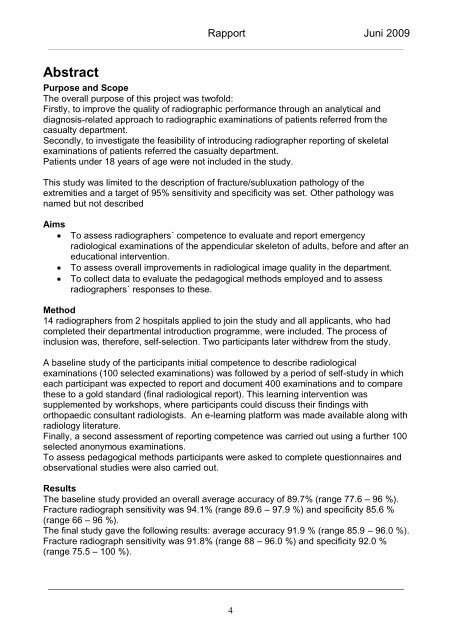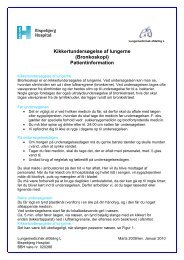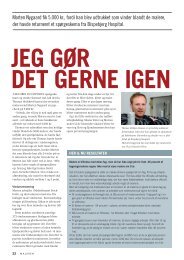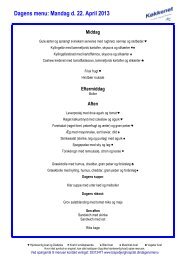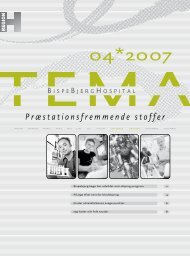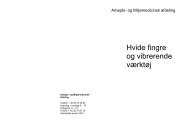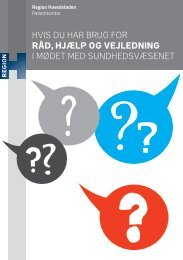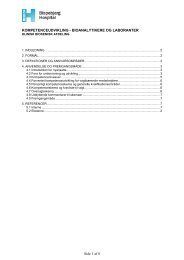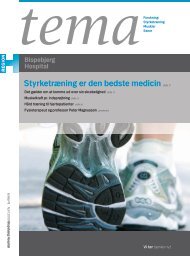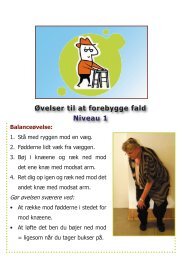Beskrivende radiografer i konventionelle røntgenoptagelser af det ...
Beskrivende radiografer i konventionelle røntgenoptagelser af det ...
Beskrivende radiografer i konventionelle røntgenoptagelser af det ...
Create successful ePaper yourself
Turn your PDF publications into a flip-book with our unique Google optimized e-Paper software.
Rapport Juni 2009<br />
Abstract<br />
Purpose and Scope<br />
The overall purpose of this project was twofold:<br />
Firstly, to improve the quality of radiographic performance through an analytical and<br />
diagnosis-related approach to radiographic examinations of patients referred from the<br />
casualty department.<br />
Secondly, to investigate the feasibility of introducing radiographer reporting of skeletal<br />
examinations of patients referred the casualty department.<br />
Patients under 18 years of age were not included in the study.<br />
This study was limited to the description of fracture/subluxation pathology of the<br />
extremities and a target of 95% sensitivity and specificity was set. Other pathology was<br />
named but not described<br />
Aims<br />
To assess radiographers´ competence to evaluate and report emergency<br />
radiological examinations of the appendicular skeleton of adults, before and <strong>af</strong>ter an<br />
educational intervention.<br />
To assess overall improvements in radiological image quality in the department.<br />
To collect data to evaluate the pedagogical methods employed and to assess<br />
radiographers´ responses to these.<br />
Method<br />
14 radiographers from 2 hospitals applied to join the study and all applicants, who had<br />
completed their departmental introduction programme, were included. The process of<br />
inclusion was, therefore, self-selection. Two participants later withdrew from the study.<br />
A baseline study of the participants initial competence to describe radiological<br />
examinations (100 selected examinations) was followed by a period of self-study in which<br />
each participant was expected to report and document 400 examinations and to compare<br />
these to a gold standard (final radiological report). This learning intervention was<br />
supplemented by workshops, where participants could discuss their findings with<br />
orthopaedic consultant radiologists. An e-learning platform was made available along with<br />
radiology literature.<br />
Finally, a second assessment of reporting competence was carried out using a further 100<br />
selected anonymous examinations.<br />
To assess pedagogical methods participants were asked to complete questionnaires and<br />
observational studies were also carried out.<br />
Results<br />
The baseline study provided an overall average accuracy of 89.7% (range 77.6 – 96 %).<br />
Fracture radiograph sensitivity was 94.1% (range 89.6 – 97.9 %) and specificity 85.6 %<br />
(range 66 – 96 %).<br />
The final study gave the following results: average accuracy 91.9 % (range 85.9 – 96.0 %).<br />
Fracture radiograph sensitivity was 91.8% (range 88 – 96.0 %) and specificity 92.0 %<br />
(range 75.5 – 100 %).<br />
4


